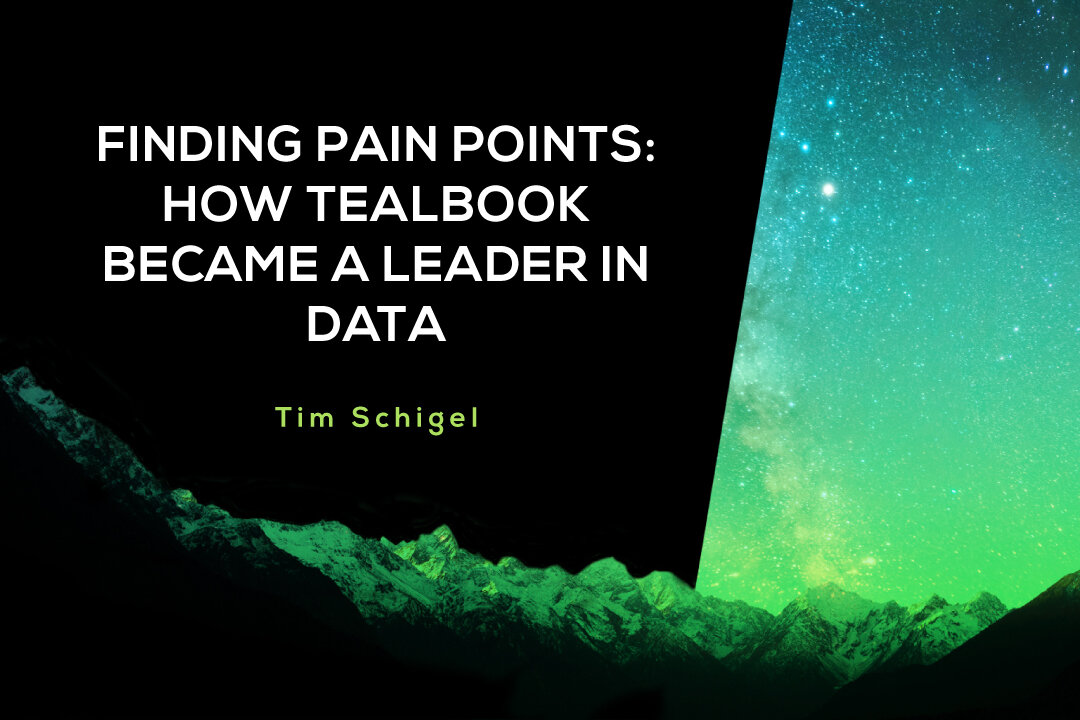Every day, we all go through some pain in our businesses. It can be a financial issue, an information issue, siloes between your teams, or other headaches. But here’s the difference between entrepreneurs and everyone else—rather than just complain about the pain points and continue with their work, entrepreneurs will strive to come up with a solution.
And that’s exactly what we’re going to explore today—the story of Tealbook, and its founder and CEO, Stephany Lapierre.
Recognizing The Problem and Finding the Solution
I happen to believe that the best ideas come from an in-depth understanding of the customer and their experience—really getting into the details of their day-to-day work and observing moments of friction. And that’s what it was like for Lapierre.
“In my prior company, I was building procurement functions for hyper-growth companies looking to achieve transparent, scalable, and enabling procurement solutions. As companies grew and introduced new software solutions to manage workflow data, they quickly created data silos within people and systems,” Lapierre explained.
As you’d imagine, data silos and workflow do not necessarily go hand-in-hand. This lead to a variety of challenges, especially when it came to unifying supplier data.
According to Lapierre, “It became incredibly challenging for organizations to synchronize and unify their supplier data, which in turn created a lot of unnecessary friction and delays to the business.”
It was easier to control spend because the organization had access to purchase orders and invoice data. So procurement invested millions of dollars in systems dedicated to spend control as the key value driver.
“In fact, 90% of procurement system implementations fail to deliver promised value due to failed implementations, overrun budgets, delayed uptime, low compliance, etc. This is in addition to poor data quality and suppliers who do not update or maintain their information in disparate systems,” Lapierre continued.
But it wasn’t spend control that would optimize its supplier base and supply chain. Data cleansing and unification was key.
“I knew that changing the construct of procurement data from spend to the supplier would solve many of the challenges faced by procurement teams. Having good supplier data across systems and giving a complete view and access to information on all suppliers would allow procurement to unlock endless value to the organization and adapt faster to market changes and business demands. Now, I had to figure out how to build it!” said Lapierre.
Fortunately, it didn’t take Lapierre long to find the solution to the disparate database problem—enter the launch of Tealbook.
In creating Tealbook, Lapierre met the third level of the customer pyramid.
Going Beyond The Problem and Meeting Unrecognized Needs
As Chip Conley (founder of Joie de Vivre Hospitality and Airbnb’s Strategic Advisor for Hospitality and Leadership) outlined in his book, Peak: How Great Companies Get Their Mojo from Maslow—the customer pyramid is broken down into three levels. The base level is meeting expectations, which is great, but it won’t take you too far. The next level is meeting desires, which is above average performance that can create loyalty. But the most important part of the pyramid—and where real success comes in—is transforming your customers’ business.
And this is just what Lapierre did. She used the empathy she had gained as a customer and understood the problem inside out. Not only did she take what she experienced as a customer to understand the problem and build a product to solve that pain point, but she went one step further and met unrecognized needs—needs that her customers’ didn’t even know they had. For instance, with better data, new capabilities will be revealed to customers, showing them things they didn’t realize they could do.
“Traditional methods to access good supplier data include recurring data cleansing and reporting services, market intelligence and data subscriptions, integrations between software, FTEs (including IT resources and tactical data collection), and high dependency on suppliers to maintain their information in disparate portals. Still, 93% of supply chain and procurement executives claim that their business is being impacted negatively due to misinformation and poor supplier data quality.
“The migration to cloud technologies and advanced computing gave rise to the opportunity to build an automated and agnostic supplier data platform that improves supplier data over time while synchronizing and unifying data across internal systems. Ultimately, this data becomes more accurate, complete, insightful, and actionable.
“Tealbook uses machine learning (ML) to aggregate supplier data across hundreds of million data sources to create a dynamic universal supplier profile for every B2B company in the world,” Lapierre explained.
Tealbook has a data team focused on using Big Data and machine learning to create a continuously more accurate, self-enriching, self-maintaining, and self-distributed supplier profile without the need for services and supplier participation.
“Tealbook’s technology improves a Fortune 1000 company’s vendor base with hundreds of thousands of suppliers by 80% while expanding their universe across 4M+ global suppliers by relevance. It gives them a mechanism to improve and distribute updated supplier data across their buy-side systems as well as provide access to all employees who can use, interact and update supplier-related information,” Lapierre explained.
Tealbook gives a strategic advantage to these companies and turns their basic customers into evangelists for their products, as they not only improve their data but save them money as well.
Timing is Everything
The last piece of the puzzle is timing, and as it turns out, the launch of Tealbook was perfectly timed.
Lapierre explained: “I was uniquely positioned to see the gaps in the market and clearly saw the solution. It didn’t exist, and I didn’t buy into where the market was heading because it didn’t solve the data problem that plagued procurement outcomes.
“The world is changing fast, and enterprises need to have access to high-quality and complete information about all suppliers in order to respond to market changes, business demands and remain competitive.
“We started using Machine Learning before procurement even knew it existed and built an incredibly smart and experienced data team to take on this hard challenge. COVID has highlighted the importance of supplier data and the need to build a resilient and agile supply chain. We were perfectly positioned to capture this market opportunity.”



